Thanks to the pre-pandemic tourism boom, much of Taiwan’s tourism infrastructure has been updated in the past decade. Among those who have especially benefited are people who need wheelchairs to get about, and those who struggle when faced with obstacles that the able-bodied can step over or step around.
Not every brand-new facility is perfect, but the concept of “universal design” (ensuring that buildings and other environments are accessible to everyone, regardless of age, disability or other factors) is slowly entering the mainstream.
This article looks at three tourist destinations where the needs of the infirm and wheelchair-bound have been taken into account, so they can enjoy a true outdoors experience.
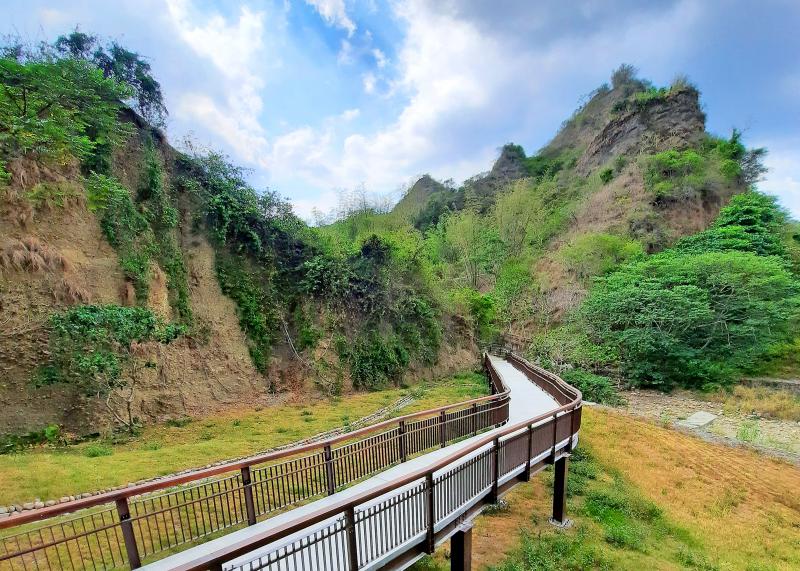
Photo: Steven Crook
CINGJING SKYWALK
The history of Cingjing Farm (清境農場) is well known. Established by the Chinese Nationalist Party (KMT) regime so anti-communist guerillas evacuated from Southeast Asia in 1961 could be resettled, within a generation it had morphed into a magnet for domestic tourists. It remains the only place in Taiwan where sheep have been successfully raised.
Since 2017, sightseers have had another reason to visit the Cingjing area, which on a good day is just 90 minutes’ drive from central Taichung.
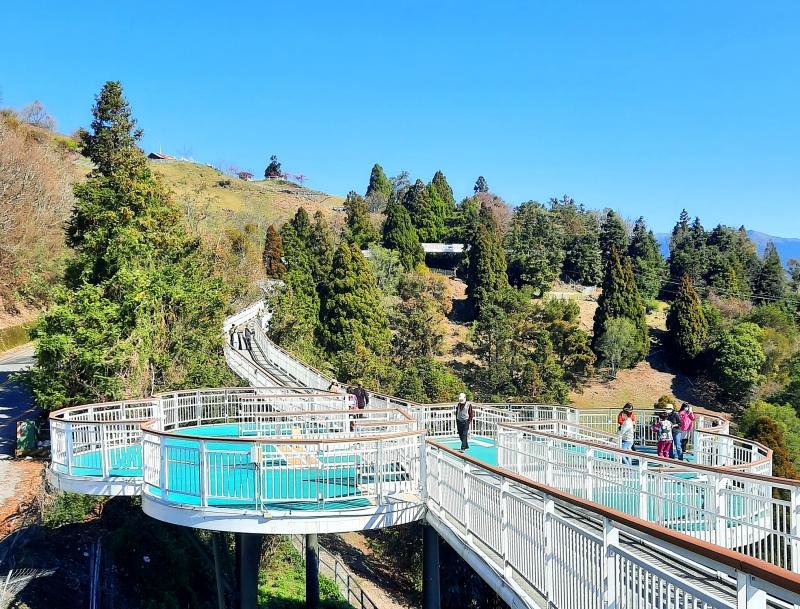
Photo: Steven Crook
Cingjing Skywalk (清境高空步道), a 1.6km-long elevated path with superb views of the nearby Central Mountain Range (中央山脈), runs parallel to part of Provincial Highway 14A (14甲). There’s a sprawl of eateries and shops around its southern end. Its northern terminus has an entrance to the pastureland known as Green Green Grassland (青青草原).
Many visitors go from north to south. If you want to catch one of the farm’s sheep-shearing shows, it makes sense to take in the morning performance, then saunter leisurely along the skywalk until lunchtime.
If there’s a wheelchair user in your group, moving in this direction also means the gradient will be in your favor. This isn’t to say that fit people will find walking south to north at all difficult — the incline is gentle throughout.
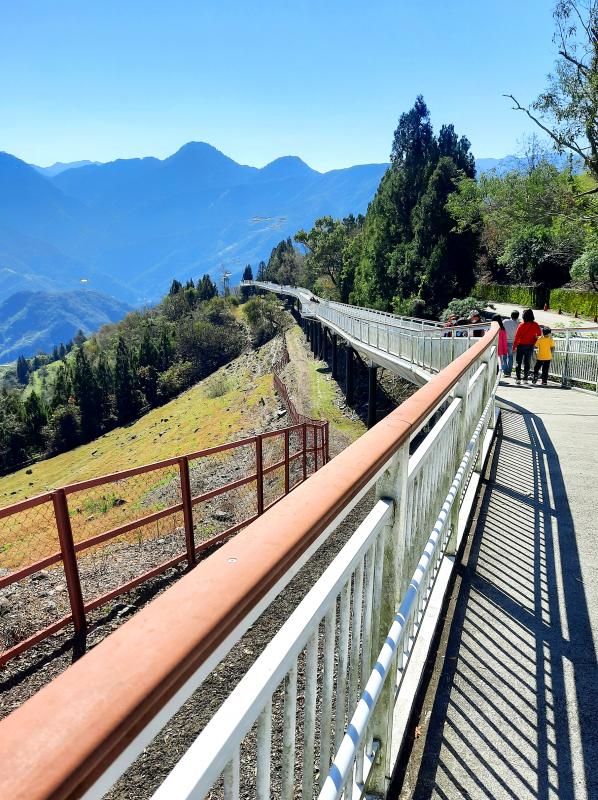
Photo: Steven Crook
The path is 2.5m wide, more than enough for wheelchairs and baby strollers to pass and turn without difficulty. The main handrails are quite high, so people don’t topple off the walkway when taking selfies. For the sake of wheelchair users and infants, there are additional lower handrails on both sides.
The skywalk’s viewing platforms offer plenty of space, as well as breathtaking perspectives. The peaks of Cilai Mountain (奇萊山) and Nenggao Mountain (能高山) are usually visible.
Standard admission to the skywalk costs NT$50. For residents of Nantou County and children who’ve yet to enter elementary school, it’s NT$30. Disabled people (and one able-bodied companion for each handicapped individual) pay NT$10, as do senior citizens.
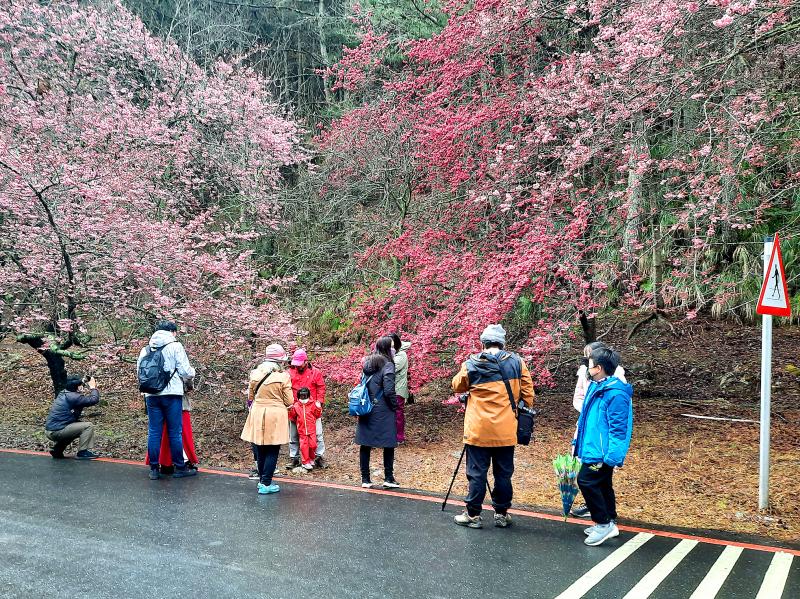
Photo: Steven Crook
The authorities limit visitor numbers to 4,000 per day, with 3,400 tickets being available for online reservation in advance. The skywalk is open from 8am to 4:30pm each day.
There’s no bathroom along the path. If you need to answer the call of nature, or want to get something to eat, you can leave the skywalk and return the same day without buying an additional ticket; just get your hand stamped as you leave. If you wish to leave the skywalk at the northernmost entrance/exit, you’ll need to buy a ticket for Green Green Grassland. (General admission to the grassland is NT$200).
The skywalk is around 1,750m above sea level and exposed to the elements, so be prepared for both cold winds and strong sunshine.
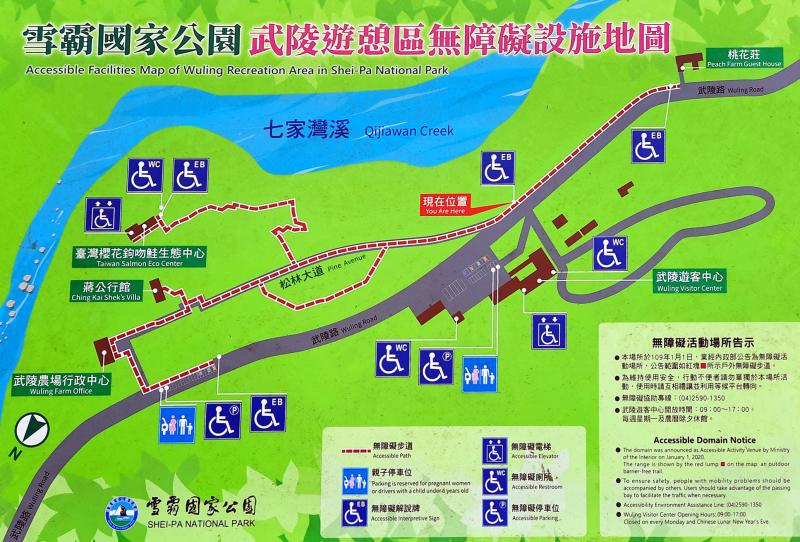
Photo: Steven Crook
WULING FARM
Considering how many different government agencies have overlapping responsibilities for this valley deep in the mountains of Taichung, Wuling Farm (武陵農場) runs like a well-oiled machine.
Like Cingjing Farm, Wuling Farm was carved out of the wilderness to provide employment for demobilized military personnel. The Veterans Affairs Council (國軍退除役官兵輔導委員會 or 退輔會) continues to play a central role in its management, while Shei-Pa National Park (雪霸國家公園) is charged with protecting the area’s ecosystems. Because much of the farm’s 700 hectares are being afforested, the Forestry Bureau (林務局) is also involved.
During the cherry and plum-blossom season, the farm attracts so many sightseers that visitor numbers are capped, and most private vehicles are kept out.
Minimizing the number of cars inside the farm is important, because many tourists — be they users of mobility aids or blessed with two good legs — get from one scenic spot to another via the main road.
It’s not practical for wheelchair-bound visitors to make their way to Taoshan Waterfall (桃山瀑布). However, with a bit of help they can follow the trail a short distance to Wuling Suspension Bridge (武陵吊橋) and look down at Cijiawan Creek (七家灣溪).
This waterway isn’t just a beautiful high-altitude stream. It’s also the main habitat of the beleaguered Formosan landlocked salmon. This fish never ventures near the sea, because adult salmon sicken in waters warmer than 17 degrees Celsius, and their eggs don’t hatch in temperatures above 12 degrees Celsius.
The creek is pristine, yet you shouldn’t expect to see any salmon from the bridge. Few of them grow more than 40cm in length, and their mottled gray appearance helps them blend in with the gravelly streambed.
Fortunately, you’re almost guaranteed to see a few swimming in the manmade pools near the Taiwan Salmon Eco Center (台灣櫻花鉤吻鮭生態中心). The center has both an accessible elevator and a barrier-free bathroom.
General admission: NT$160. There are also parking charges.
18 ARHATS MOUNTAIN
Kaohsiung’s Liouguei District (六龜) is cut into halves by the Laonong River (荖濃溪). On the western side of this waterway, there’s a range of steep hillocks known as 18 Arhats Mountain (十八羅漢山), in honor of the Buddha’s original followers.
The number is poetic license. There are actually more than 40 cone-shaped hills, and until well into the 20th century they formed a barrier between Liouguei and the outside world.
To improve transportation links, the Japanese colonial authorities cut six tunnels between 210m and 42m in length through the hills. Once Provincial Highway 27A (27甲) was built, these tunnels were more or less forgotten about.
In recent years, they’ve been reopened to the public, and a short and flat yet very pleasant path has been laid so everyone can enjoy the area’s appealing scenery.
There are no admission or parking charges.
Steven Crook has been writing about travel, culture and business in Taiwan since 1996. He is the author of Taiwan: The Bradt Travel Guide and co-author of A Culinary History of Taipei: Beyond Pork and Ponlai.

Nine Taiwanese nervously stand on an observation platform at Tokyo’s Haneda International Airport. It’s 9:20am on March 27, 1968, and they are awaiting the arrival of Liu Wen-ching (柳文卿), who is about to be deported back to Taiwan where he faces possible execution for his independence activities. As he is removed from a minibus, a tenth activist, Dai Tian-chao (戴天昭), jumps out of his hiding place and attacks the immigration officials — the nine other activists in tow — while urging Liu to make a run for it. But he’s pinned to the ground. Amid the commotion, Liu tries to
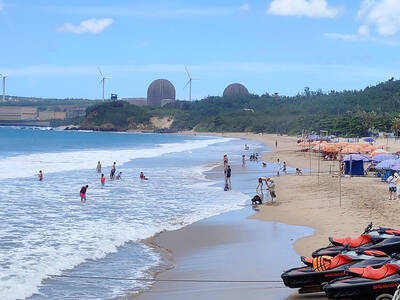
A dozen excited 10-year-olds are bouncing in their chairs. The small classroom’s walls are lined with racks of wetsuits and water equipment, and decorated with posters of turtles. But the students’ eyes are trained on their teacher, Tseng Ching-ming, describing the currents and sea conditions at nearby Banana Bay, where they’ll soon be going. “Today you have one mission: to take off your equipment and float in the water,” he says. Some of the kids grin, nervously. They don’t know it, but the students from Kenting-Eluan elementary school on Taiwan’s southernmost point, are rare among their peers and predecessors. Despite most of

A pig’s head sits atop a shelf, tufts of blonde hair sprouting from its taut scalp. Opposite, its chalky, wrinkled heart glows red in a bubbling vat of liquid, locks of thick dark hair and teeth scattered below. A giant screen shows the pig draped in a hospital gown. Is it dead? A surgeon inserts human teeth implants, then hair implants — beautifying the horrifyingly human-like animal. Chang Chen-shen (張辰申) calls Incarnation Project: Deviation Lovers “a satirical self-criticism, a critique on the fact that throughout our lives we’ve been instilled with ideas and things that don’t belong to us.” Chang
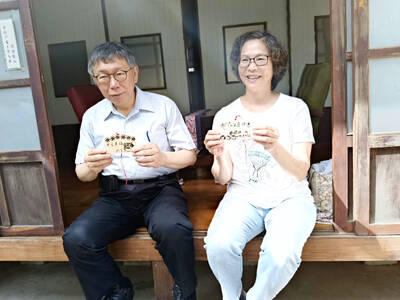
The resignation of Taiwan People’s Party (TPP) co-founder Ko Wen-je (柯文哲) as party chair on Jan. 1 has led to an interesting battle between two leading party figures, Huang Kuo-chang (黃國昌) and Tsai Pi-ru (蔡壁如). For years the party has been a one-man show, but with Ko being held incommunicado while on trial for corruption, the new chair’s leadership could be make or break for the young party. Not only are the two very different in style, their backgrounds are very different. Tsai is a co-founder of the TPP and has been with Ko from the very beginning. Huang has